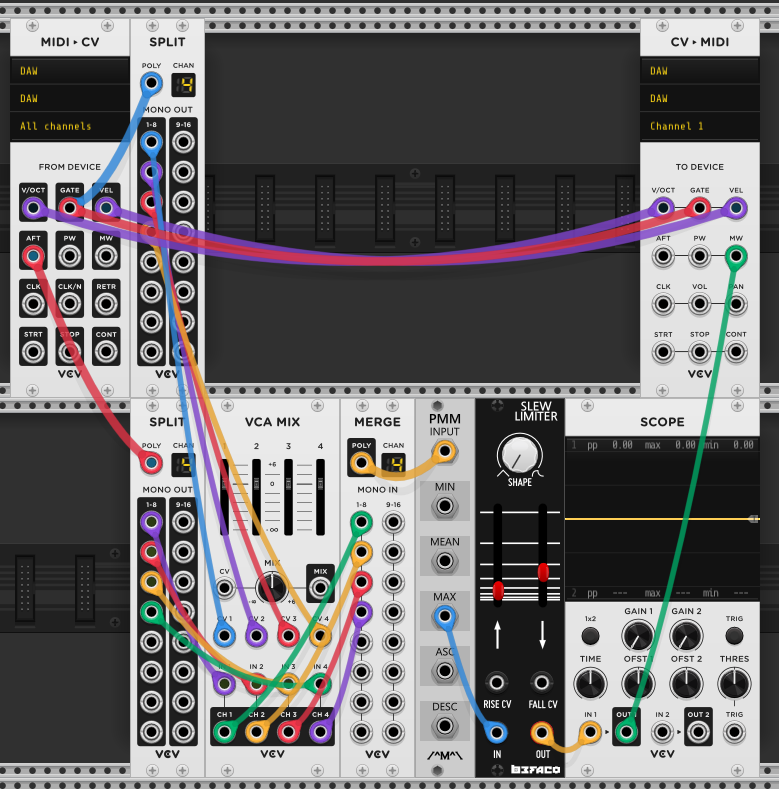Just got back from a session at an infrared sauna. My second one; the previous was in 2018 or so. I don’t believe the ridiculous “detox” claims — that’s what peeing is for, not sweating — but it does relax the muscles. Even though I don’t like heat, bright light, direct sunlight, put me in a dim room and bake for 40 minutes at 140 degrees F and I’ll come out happier.
I do have a couple of specific back pain areas that it only marginally helped, and I really wish the infrared robot massage bed place was still open because that was awesome. Following it up with the sauna would be great. Alas. But as it is, I let go of tension in places I didn’t know it was, and my back does feel better overall than it did this morning.
I started working on a track before the session, and got it to the point where I’m ready to play and record it. You can’t keep a prolific musician down I guess. I’m kind of tempted to try dubbing in a (very simple!) u-bass part… we’ll see how that goes after the initial recording. I don’t have enough hands to really do it all, but perhaps in the future I’ll set up something easier to control to feature the u-bass in one take.
Dear Universe,
I am not interested in the following things, no matter how much they are promoted, spammed, presented by algorithms, shoved into various internet feeds, featured prominently in the very operating system I use at home and at work, included as a specific button on my phone, or otherwise attempt to get my attention with them.
- Selling our house. Let me put it plainly: fuck off, we live here. And if we ever do decide to move for some reason, I’ll go to a realtor, not a spammer.
- Microsoft OneDrive. Give up, already. I have a third-party, secure cloud storage service that does not shove itself into my face in every Windows dialog at home and at work.
- Donating to your political campaign. If you’re somebody I’ve never heard of from a red state I’ve never been to and your entire campaign is “I’m not a Republican,” forget it. If you’re Nancy Pelosi or whoever keeps pretending to be her in text messages, use your own damn pocket money. If you’re an actual socialist running for a position where you actually have a fighting chance of making real change? Then I’ll consider it, but I’m not made of money.
- Joe Rogan.
- The Kardashians, the Jenners, and anyone else who is only famous for being famous. Caitlyn at least played professional tennis, but she is also basically a horrible person from what I have heard and in no way a good representative for trans people. P.S. eat the rich.
- Kanye West. Elon Musk. Anyone else who maybe did one or two cool things and a whole lot of dumb shit and has an ego the size of Jupiter and a bank account the size of one of its moons and thinks they’re an expert at everything.
- Radiohead. I. do. not. care. about. Radiohead. Contrary to some claims, they did not invent modular synthesizers, they were not responsible for the Eurorack explosion, and I don’t like the guy’s voice or any of their songs. No doubt I like some music you don’t like too, but I have never tried to claim that it is the inspiration for everything everyone else in the world does.
- Facebook/Meta. No, I’m not coming back. You make me want to quit Instagram too.
- Boxing/MMA. Why any algorithm thinks I am even remotely interested in it, I have no idea. I don’t like sports in general, but on the spectrum from “would watch this unusual sport with lukewarm interest for a few minutes” to “just ban it already”, boxing is right near the second one.
- Over-the-top drag queen makeup. I have nothing against drag queens in general, and I’m sure it’s an art, but it’s an art I just don’t like. It’s eyeshadow, not entirefacevortex. Here, I figure the algorithm decided that since I have supported some LGBTQIA+ representative types and nonbinary/genderfluid people in particular, I must like everything even remotely associated with it.
- Black mens’ hairstyle trends. Seriously, (A) I happen to be white and (B) I haven’t been able to grow hair on top of my head since I was about 22 and (C) am not a barber/stylist and don’t want to be. Why does this keep getting pushed at me?
- Architectural firms. Really Instagram, wtf is this?
- Cryptocurrency, NFTs, web3, and blockchain evangelizing. If you’re so smart, try solving an actual human need.
- Phone games that send notifications to nag you to play them. Instant uninstall right there.
- Samsung Bixby. I have only ever launched it accidentally.
- “Unsubscribe” links that go to a 404 page or other errors, or require signing in. Nope, “Report Spam.”











